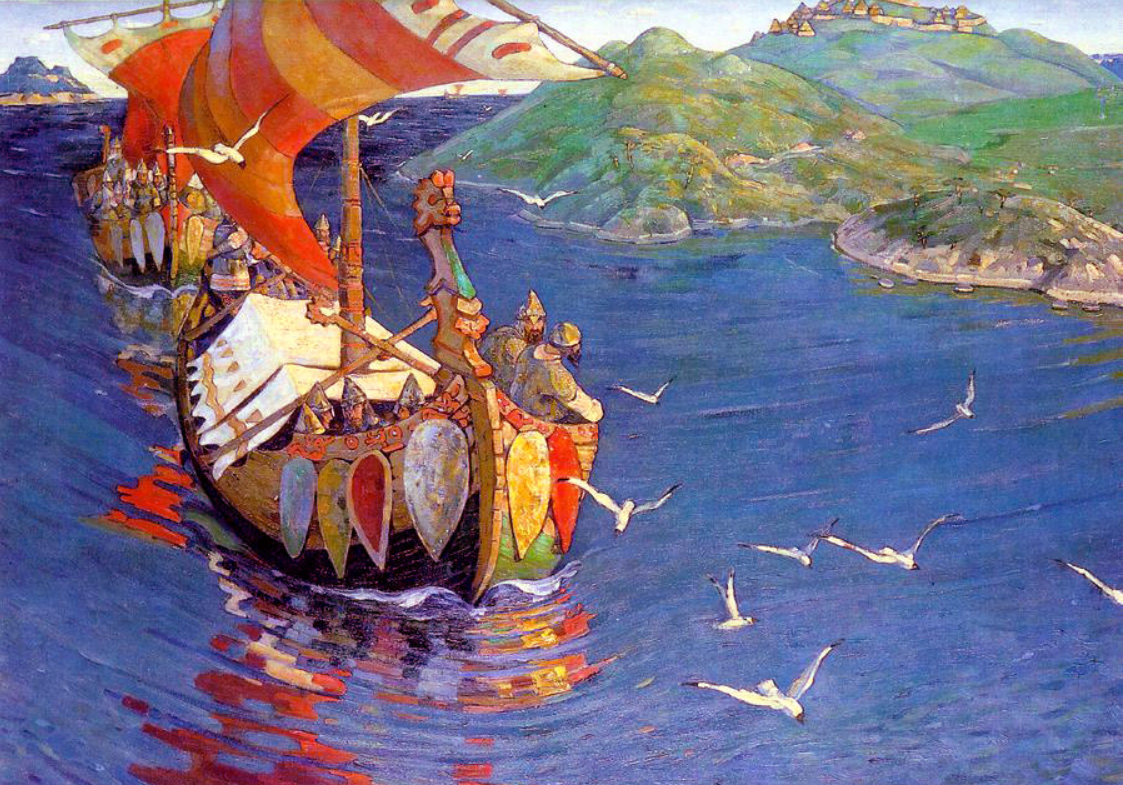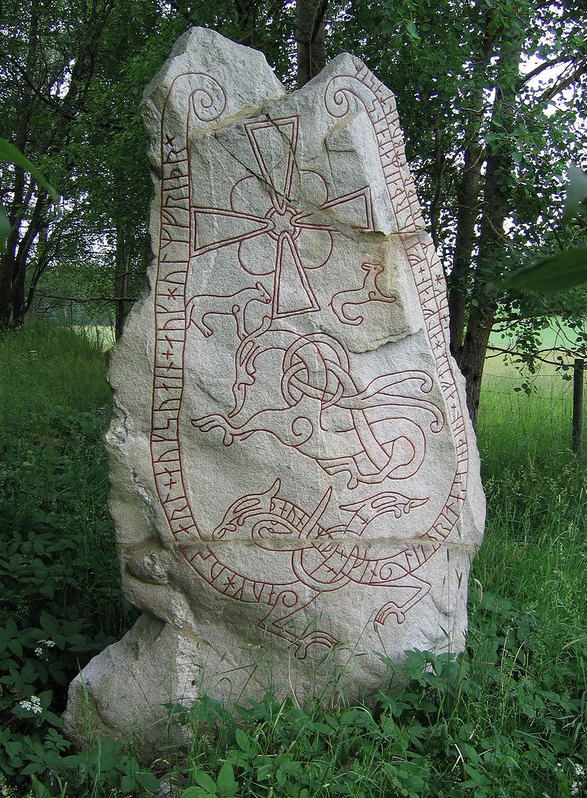Are Vikings Germanic? Germans vs Vikings Explained
History of the Scandinavians
To understand if there is a link to the Scandinavian Vikings and the Germanic tribes of Europe we must first learn more about the origins of both so we start with the Vikings.
Sweden & Denmark History
Around 12,500 years ago the last ice age ended and vast glaciers receded north from northern Europe. As the sheet of ice moved northward it exposed the land of what is today the Scandinavian Peninsula. This new land was quickly explored by stone age mainland Europeans who traveled north between 9,000 and 1800 BC.
These hunters and gatherers followed herds of animals with the hunters ranging the furthest north in search of game. In the south groups would settle and start farming the land and building communities. These southern settlers also quickly developed boat building skills which kept them connected to mainland Europe.

The early settlers in the region spoke a language known as Old Norse, also known as donsk tunga (Danish tongue), which is the root of all known Scandinavian languages today.
Early Norwegians
Descended from the same people who settled in Denmark and Sweden, the people of what is now modern-day Norway consisted of the hunters who traveled further north. In this region remnants of the ice age hung onto the northern coast of the Scandinavian peninsula making for harder and colder conditions.
The early settlers of Norway mainly hunted and fished to survive with a few starting very primitive farms as well. It wasn’t until around 2500 BC that the ice age finally fully receded from Norway making it possible for more settlers to arrive.
Farming began to take over hunting although fishing remained an important source of food. During this same period, new nomadic peoples arrived in Norway. The Sami traveled to and settled in Norway from somewhere in Eurasia. They were reindeer herders, hunters and fishermen and they still exist today holding on to many ancient practices.
Rise of the Vikings in Sweden
These early settlers were for the most part content to lay down roots, live in independent clans, work the land and raise their families. However, following the Scandinavian Iron age (500 BC – 800 AD) things began to change. Advances in weapons and shipbuilding created the potential for exploration.These iron age advances led to the Viking age (793 – 1066 AD). This era saw ships full of Norsemen travel throughout the seas and waterways of Europe. In some places, they would trade while in others they would raid.

The Swedish Vikings became merchant river explorers in Eastern Europe giving rise to the Varangian Vikings. They ranged through eastern Europe as far east as the Ukraine and Russia where they established strongholds. In the 9th century these Vikings created one of the first Slavic States, Kievan Rus.
The Norwegian Vikings
The Vikings of Denmark along with the Norwegians raided and traded to the West across the sea where many settled in England. This gave rise to the Danelaw settlements in Britain.
As with the Vikings that developed in Sweden and Denmark the Norse of Norway developed as a result of the Scandinavian iron age (500 BC – 800 AD). They traveled by sea to the west interacting with the Gauls and the Roman Empire from (1 – 800 AD).
The Norwegians acted as mercenaries and traders throughout this period developing a ferocious reputation. They did not trade as much as the Swedish and Danes but were most often raiders who would settle in other regions when they could.
Germanic Tribes History
We next take a look at the Germanic peoples and their history.
Early Germanic Europeans
The early inhabitants of the Germanic European region were somewhat surprisingly the Celts. We often think of the Celts as being associated with the British Isles but in truth rather than being a singular people, they were a wide-ranging group of different tribes.
Spread throughout Europe the Celtic tribes were first described by the Romans in 7th and 8th centuries BC. The Celtic tribes controlled most of the European continent by the 3rd century BC ranging all the way to Ireland in the West. As the culture declined Ireland in fact remained one the last strongholds of Celtic culture.
It is likely that Celtic tribes were living in the region we know today as Germany for around 2,600 years before being driven out by Germanic tribes to the north and under pressure from the Romans in the south.

As the Celts shifted to the west their place was taken by the Germanic tribes such as the Huns and Visigoths who came from Scandinavia. These Germanic tribes were fierce fighters and served somewhat as a roadblock for the Roman advance north.
Because the Germanic tribes held fast against the Roman empire there was little impact from the Romans in terms of DNA.
The Frankish Empire
An important stepping stone in creating the region we refer to as Germanic Europe was the formation of the Frankish Empire. Germanic tribes started to band together to form Francia, a region that was located in an area supposedly northeast of the Rhine river.
Francia was first recorded in about the 3rd century and was considered to be part of the lands ruled by tribes such as the Sicambri, Salians, Bructeri, Ampsivarii, Chamavi and Chattuarii. These were all considered Frankish tribes.
As the territory of these tribes expanded, so did the concept of Francia. The Kingdom of the Franks as it was also known expanded throughout all of Germany, France, Italy, The Netherlands and Austria. It was during this time that the basis for the Germanic European DNA traits was laid.
What Does Viking Mean?
We often refer to people from a certain era who originated from Scandinavia as Vikings but what exactly does that mean? Well firstly Scandinavians of the time did not call themselves Vikings, this is actually a more modern name used to describe sea-faring raiders who originated from Scandinavia. These were the raiders coming from Sweden, Denmark and Norway during the 8th thru the late 11th centuries.
So Vikings then were simply Scandinavian seafaring raiders and the term Viking is used to describe the raids they perpetrated. They went Viking for riches, food and slaves.
Were the Vikings a Germanic People?
It is generally accepted that the Norse people living in Scandinavia during the Viking Era were Northern Germanic peoples who spoke a Germanic language. They were directly descended from the same Nordic Bronze Age culture from Which the southern Germanic tribes originated.
It is thought that Germanic peoples may all have originated from a small area of southern Scandinavia and northern Germany at some point during the 4th century BC. From this original focal point the Germanic peoples migrated around all of Europe some moving further north in Scandinavia while others went south displacing the Celts with others traveling as far as Asia.

The connection between the Norse Vikings then and the Germanic tribes further south in Europe was one of distant relations. They came from the same people who spoke similar Germanic languages and are today both considered to be Germanic.
It is accurate then to say that the Vikings were a Germanic people but they had developed separately from the other tribes who had moved south in Europe. Distant cousins to the Germanic people of the south the Viking raiders were viewed as barbaric heathens even if there was any understanding of a common heritage.
Final Thoughts
The Scandinavian peoples and the Germanic tribes of the south near Germany and France came from the same origins. They both then are considered Germanic peoples. As Viking was just a term for sea-faring raiders from Scandinavia then the Vikings were Scandinavian in origin. Therefore yes, the Vikings were a Germanic people sharing languages and certain beliefs with other Germanic tribes.
Link To or Reference This Page
We spent a lot of time downloading, cleaning, merging, and formatting the data that is shown on the site.
If you found the data or information on this page useful in your research, please use the tool below to properly cite or reference Name Census as the source. We appreciate your support!
-
<a href="https://namecensus.com/blog/are-vikings-germanic-germans-vs-vikings-explained/">Are Vikings Germanic? Germans vs Vikings Explained</a>
-
"Are Vikings Germanic? Germans vs Vikings Explained". NameCensus.com. Accessed on May 8, 2024. https://namecensus.com/blog/are-vikings-germanic-germans-vs-vikings-explained/.
-
"Are Vikings Germanic? Germans vs Vikings Explained". NameCensus.com, https://namecensus.com/blog/are-vikings-germanic-germans-vs-vikings-explained/. Accessed 8 May, 2024
-
Are Vikings Germanic? Germans vs Vikings Explained. NameCensus.com. Retrieved from https://namecensus.com/blog/are-vikings-germanic-germans-vs-vikings-explained/.
